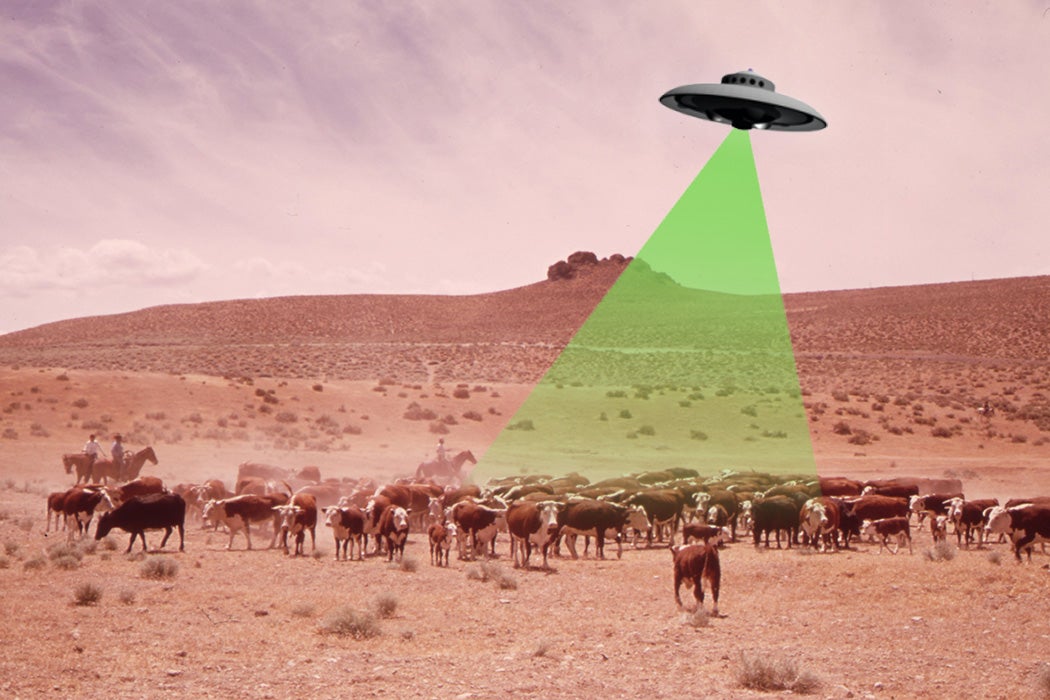In the 1970s, ranchers all over the country began reporting something strange. Their cows were turning up dead, with portions of their faces and genitals removed. Historian Michael J. Goleman dove into the mystery, and found answers that had nothing to do with aliens or satanic cults.
Goleman writes that the reports of cattle mutilations began in 1973, mostly in the West and Midwest. It was often small-scale ranchers who reported them. When local law enforcement agencies investigated, they frequently found that the cows’ ears, eyes, rectums, and sex organs had been cut away with “surgical precision.” According to newspaper reports, more than 10,000 of the incidents occurred by the end of the decade.
Some news stories suggested UFOs or cults might be involved. But among ranchers, the most common theory was that this was a government conspiracy. Some suggested that the mutilations might be part of a secret government program testing biological weapons. Some reported seeing unmarked helicopters near the crime scenes and even being chased by the aircraft. In a few cases, incensed ranchers shot at government helicopters. The threat was serious enough that the Nebraska National Guard began flying at 2,000 feet rather than 1,000 during its exercises.
To see what the panic was all about, Goleman suggests we consider the context. The early 1970s were a brutal time for ranchers. To begin with, many felt threatened by growing federal environmental conservation efforts, which included limiting grazing on public land. High inflation rates, combined with the federal purchase of large amounts of grain to respond to food shortages elsewhere in the world, drove feed prices up. Then the Nixon administration instituted a price freeze on meat. The entire situation, known as “the Wreck,” was particularly dire for small ranches, which lacked the lobbying power of larger operations.
When agencies such as the Colorado Bureau of Investigation looked into the cattle mutilations and found no sign of human involvement, some ranchers suspected that this was yet another case of official misconduct. And in fact, the idea of a government conspiracy wasn’t so far-fetched. After all, the Army had accidentally killed more than 4,500 sheep in 1968 while testing nerve agents in Utah—and then refused to acknowledge its responsibility until 1998.
Weekly Newsletter
But, Goleman writes, in reality, the vast majority of the “mutilations” were almost certainly the work of scavengers like coyotes, magpies, and badgers, which consume soft tissue like eyes and genitalia first. (Without this sensational element, the random deaths of cows on ranchland was nothing unusual.) It appears that law enforcement officials who were unfamiliar with scavengers’ habits described their excision of bovine body parts in ways that suggested human actors. This probably fueled early media reports, which then primed other ranchers to report “mutilations.” But veterinarians and large-scale ranchers were skeptical from the beginning.
Ultimately, Goleman suggests, the mutilation panic was a manifestation of a growing cynicism about the government that helped shape US politics in the decades that followed.
Support JSTOR Daily! Join our new membership program on Patreon today.







